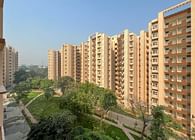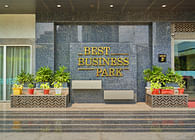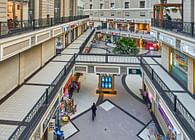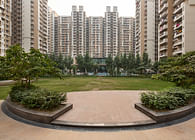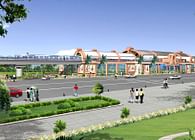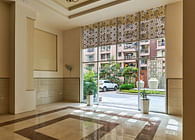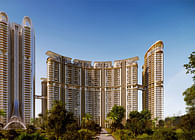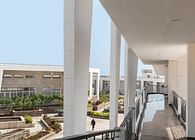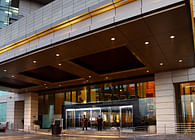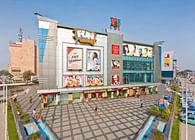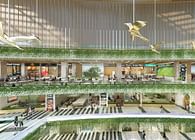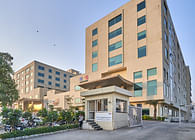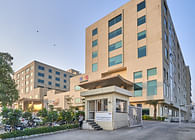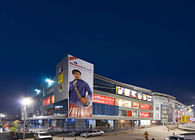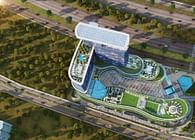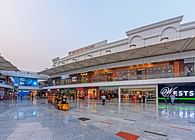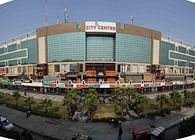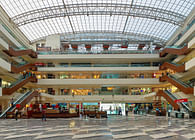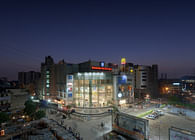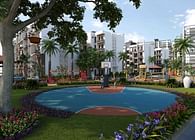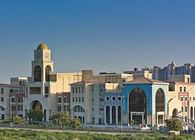
New Delhi, IN
With ripples of the Covid-19 pandemic felt throughout all sectors of the economy, the architecture and construction industry has faced numerous challenges. Construction projects were stalled, and delivery dates were postponed, inevitably decreasing the number of new project launches and corresponding sales. When the entire construction sector was at a standstill, the Office Complexes at KG Marg and Africa Avenue proved to be an accomplishment. Completed in 12 months during the pandemic, the project has saved significant time and resources with its quick construction. Not only was the project completed in a record time during the pandemic, but it also provided employment opportunities to many laborer who had lost their jobs due to lockdown restrictions on construction sites.
The new Defence Office Complexes are designed to relocate the existing defence establishments and accommodate around 7,000 officials from the Ministry of Defence and the Armed Forces. The new office complexes are state-of-the-art and energy-efficient, with comprehensive security management measures, providing modern, secure, and functional working spaces. Enhanced acceptance of new construction technologies and industry practices has helped us sail through this project's difficulties. One of the defining features of these buildings is the use of new and sustainable construction technology called LGSF (Light gauge steel frame). A non-polluting, dry construction method is used to make its execution environmentally friendly. To reduce the construction time, pre-engineered structural members such as structural steel columns and beams are used. The use of standardized materials, PEB structures, and modular practices like aluminum formwork and jump formwork also substantiated to be very effective. Another significant shift in the design strategy was to create large column-free spaces that can offer a chance to introduce flexibility into the buildings, so that they can be made adaptable as per need.
The building has a dynamic façade, cladded with ventilated terracotta tiles to provide thermal comfort. Being a low maintenance material, it provides acoustic insulation from the outside which reduces noise levels up to 15%. The solid mass of the envelope is broken down by the addition of large clear glazed windows bringing adequate natural light. Keeping in mind the global office trends, the interiors of the buildings have a strong sense of space planning, use of technology and materials. Easy to install, maintain and durable materials that are fire-rated, energy-efficient and aesthetically pleasing are used to design the workplaces. A mix of enclosed and open spaces, conforming to the norms of universal accessibility, are provided for privacy and a comfortable co-working culture.
As a CPWD certified Green building, the design utilizes resource-efficient green technology, thereby promoting environment-friendly practices. The planning of the building blocks is done to ensure no existing trees are cut on-site. Additionally, a combination of evergreen, deciduous, flowering trees are planted to provide shade and enhance air quality. To further keep the air quality in check, air quality monitoring devices are used. Other sustainable practices used in the project include rainwater harvesting and the treatment of wastewater. Part of the treated wastewater is utilized for flushing, using dual plumbing systems, and gardening, while the surplus is supplied to the New Delhi Municipal Council. Structurally, consisting of pre-engineered structural components, only nuts and bolts were used for assembly on site without any requirement for welding, thus saving on energy consumption. The Terracotta façade reduces solar heat gain, reducing air conditioning load and saving energy by 30%. The main grid is connected to solar panels of 520 KWp capacity and the solar energy generated is used for solar supported street lights. Additionally, the use of occupancy sensor-based lighting systems and air conditioning systems saves unwanted wastage of electricity, reducing energy consumption.
Comprehensive security management measures are also implemented within the buildings considering that these office spaces shall be used by defence personnel. An integrated command and control center is established for managing building operations, while also catering to the end-to-end safety and surveillance of the buildings. The entire perimeter of the campus is secured by installing solar fencing along the boundary wall. Vehicular entry to the site is restricted and entry and exit are RFID operated with features such as Automatic Number Plate Recognition and Under Vehicle Scanning System. The entry and exit of visitors are also controlled and monitored using a secure visitor management system.
The past year has been challenging, but a change in approach and imbibing new practices into the design has helped us tide over the crisis. Bringing in modular design and new technologies for such large-scale projects can save time and ensure quality, leading to a rise in the frequency of construction. The defence office complexes are the manifestation of changing work culture and priorities of the government with the optimal and proper use of available land. This project has the potential to be an example of how, today, we can speed up construction while minimizing activity on-site and without disturbing the natural environment.
Status: Built
Location: New Delhi, IN
